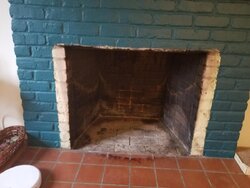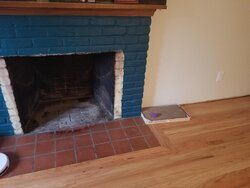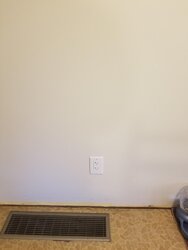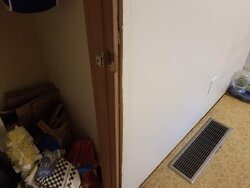I'm looking for some advice on how and where to install a high-temperature wire into the fireplace box. We don't want a wire running outside of the box.This is for a flush mount wood insert.
I think the best option is from the outlet on the backside of the fireplace, shown in picture 3. With that option, I'm not sure how to get the wire into the junction box - more of an electrical question. Do I remove the existing Jbox and install an old work junction box?
Another option I thought of was putting a new outlet/junction box in the side of the closet in picture 4, which is on the right side of the fireplace - so drill through the side of the fireplace, run a wire from the outlet in the back wall (pic 3) over to the closet to bring power, then put in a new jbox. It seems like an extra step to do it this way, but I wouldn't have to remove the box on the back wall - just run wire out of it over to the closet. There is probably a 6" gap between the back wall and the fireplace so there is plenty of space to run a wire.
Questions:
What do you think is the best option?
Should I install a switch on the power to the insert?
When drilling through the fireplace, do you drill through the mortar or the brick?
What do I seal the hole with?
I think the best option is from the outlet on the backside of the fireplace, shown in picture 3. With that option, I'm not sure how to get the wire into the junction box - more of an electrical question. Do I remove the existing Jbox and install an old work junction box?
Another option I thought of was putting a new outlet/junction box in the side of the closet in picture 4, which is on the right side of the fireplace - so drill through the side of the fireplace, run a wire from the outlet in the back wall (pic 3) over to the closet to bring power, then put in a new jbox. It seems like an extra step to do it this way, but I wouldn't have to remove the box on the back wall - just run wire out of it over to the closet. There is probably a 6" gap between the back wall and the fireplace so there is plenty of space to run a wire.
Questions:
What do you think is the best option?
Should I install a switch on the power to the insert?
When drilling through the fireplace, do you drill through the mortar or the brick?
What do I seal the hole with?






